This is a free fortnightly newsletter about the New Zealand Net.
If you would like to be notified by email when a new edition is published, please contact ZL1NZ.
Browse our Newsletter Archive and List of Net Tips.
Featured key

Photo: ZL2TE
By Graeme ZL2TE
At the last Taranaki branch Junk Sale I was lucky enough to purchase this K8RA P-2 dual-lever paddle which I consider the nicest key that I have ever touched. My usual key was a Bencher, although it is now sitting on the back of the bench while I try to master a touch keyer – but that is another story.
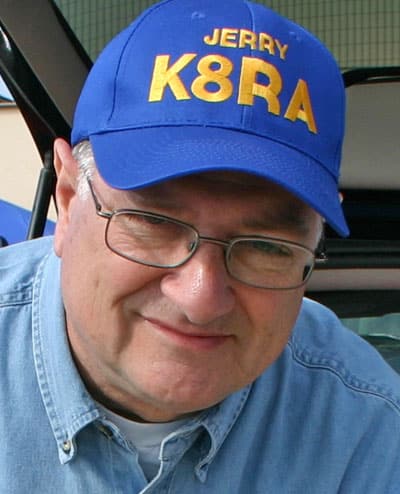 The K8RA P-2 paddle was made by Jerry Pittenger K8RA (SK). It has roller bearings on all the pivot points both top and bottom (where the beam is). The contact adjustment is not a screw but a pin that slides through the support block and you simply insert a feeler gauge, press the contact home and tighten the lock screw. The adjustment is precise and repeatable.
The K8RA P-2 paddle was made by Jerry Pittenger K8RA (SK). It has roller bearings on all the pivot points both top and bottom (where the beam is). The contact adjustment is not a screw but a pin that slides through the support block and you simply insert a feeler gauge, press the contact home and tighten the lock screw. The adjustment is precise and repeatable.
Jerry was well known for his linear amplifier projects which appeared in QEX and Ham Radio magazines and the ARRL Handbook.
It seems that Jerry was one of the good guys and often would not charge for repairs and in many cases extensive refurbishments. He had the habit of giving keys to newly licensed hams who were dedicated to going on CW. I’m sure that he would have been delighted to hear about our NZ Net.
At present I am not using the paddle but it is sitting on a bench in the garage connected to a tone oscillator and from time to time when I go by I send a “Quick brown fox” and tell myself that I have to get on top of the touch keyer and get it off my operating position and put Jerry’s paddle in its place.
Jerry Pittenger K8RA obituary at ARRL.org
* If you have an interesting key for this feature, please send a nice clear photo and a few words describing it.
Quick notes
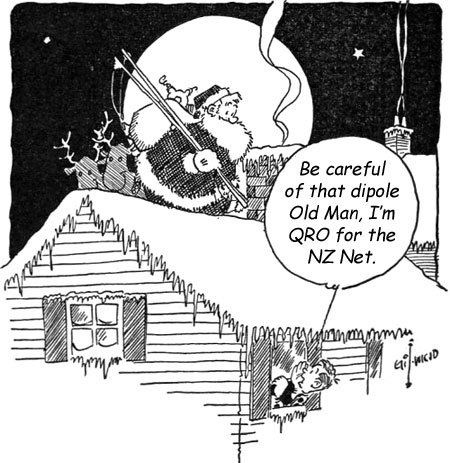
Cartoon: Gildersleeve
Introductory CW training planned. David ZL1DK, Rob ZL1RJS and Peter ZL1PX are looking for hams who want to learn CW in the coming year. Training runs March to September. Training days are Monday 7.15pm, Tuesday, Thursday and Friday at 7.30pm. 30 mins a session. Start speed is 6 words per minute. The lessons will be broadcast on the National System and on 3755 kHz. If you know any newcomers to CW, ask them to contact ZL1PX for more information.
The QRS Net for CW beginners (Wednesdays at 2000 NZT on 3545 kHz) is on summer break until 7 February 2024.
The VKCW Net (0603 UTC Wednesdays on 14.049 MHz) is also now taking a break until 7 February.
NZ Net takes no holidays, and will continue to operate every Monday-Friday during the holiday season. MX everyone.
Photo flashback
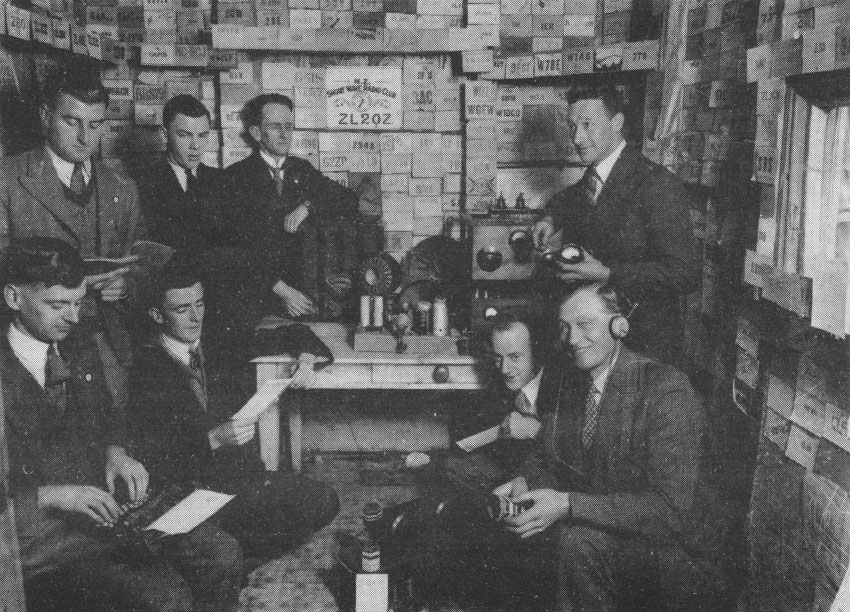
A gathering of the NZ Shortwave Radio Club (date unknown). Photo: Old Timers Club column in Break-In magazine, August 1983
There is a very interesting story about the NZ Shortwave Radio Club (ZL2QZ) in the August 1983 Break-In, and particularly with respect to this photo which was found in a print shop in Wellington “where it was apparently sent many years ago for copies to be made.”
The date “21-6-1944” was written in pencil on the back of the photo, although the OTC column editor Arthur Allen ZL1JQ, doubted that this was the date the photo was taken. He felt the club was in its heyday during the mid 1930s, and unlikely to have continued into the war years. As well, the equipment in the photo appears too old for 1944.
Some of the people in the photo have been identified as follows:
Back row:
Alwyn Hartley ZL2UX (far left, reading a book)
AB McDonagh (third from left, tuning a radio)
Roy Clarke ZL2AE (far right, holding a meter)
Front row:
G “Bluey” Blong (second from right, kneeling)
Bill Hollis ZL2BD (far right, holding a coil)
QRM?

19 Dec 2023: Bandscope set at 10 kHz width, showing interference about 2 kHz below the NZ Net frequency
By Bob ZL1AYN
This picture above shows interference that seems to occupy the net frequency, or just below it, at my end. The QRM has a tendency to sweep slowly back and forth across the frequency.
I wonder if you also have the same problem? I have this active somewhere on most of the other HF ham bands and suspect that if others are not experiencing this then the local milk factory or some other industrial outfit is at fault.
It’s a real pain in the butt!
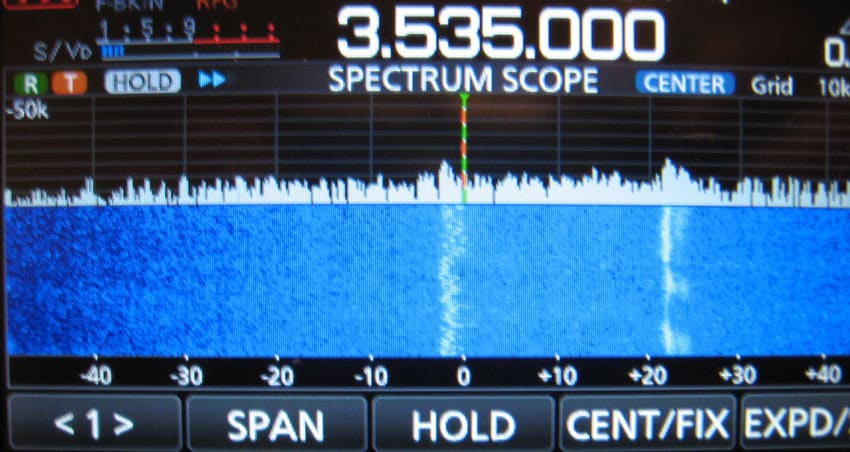
19 Dec 2023: WIth the bandscope set to 100 kHz width, one can also see interference about 25 kHz above the net frequency.
Letter to the editor
Regarding the coax splicing article in NZ Net News 121, I have spliced my RG213 coax in almost the same fashion.
The only difference being that I wrapped the inner conductor joint with plumbers Teflon tape which of course then allowed me to solder the outer braid, as Teflon is very heat resistant.
Mine was used outdoors so I covered the joint with glue-lined heat shrink and the good news is that a vector network analyser can’t find any discontinuity in the cable at all.
– Graeme ZL2TE
Morse challenge
The Musick Point Radio Group in Auckland has replaced its very old 2m FM repeater with a nice modern unit. The new machine identifies itself once per hour in Morse Code. But what is it saying?
(I apologise for the poor recording. The Morse sounds excellent on the air.)
Send your answer (the complete message) to ZL1NZ via radiogram or email.
Answer to previous Morse Challenge
The runner (named Dwight) returned on the previous night. The correct answer was received from VK3DRQ, ZL1ANY, ZL2GVA and ZL2TE.
Net tips: Speedier copying of messages
If you are finding it hard to write quickly enough to keep up with the text of a radiogram at higher Morse speeds, you might like to try this trick that I discovered a long time ago.
First of all, I should say that I print in block letters when copying traffic, rather than using cursive writing.
This trick is so simple you will probably laugh.
What is is?
Print smaller. When copying messages, I print at roughly 2/3 the size of my normal printing.
Let me know what you think.
Advertising archive
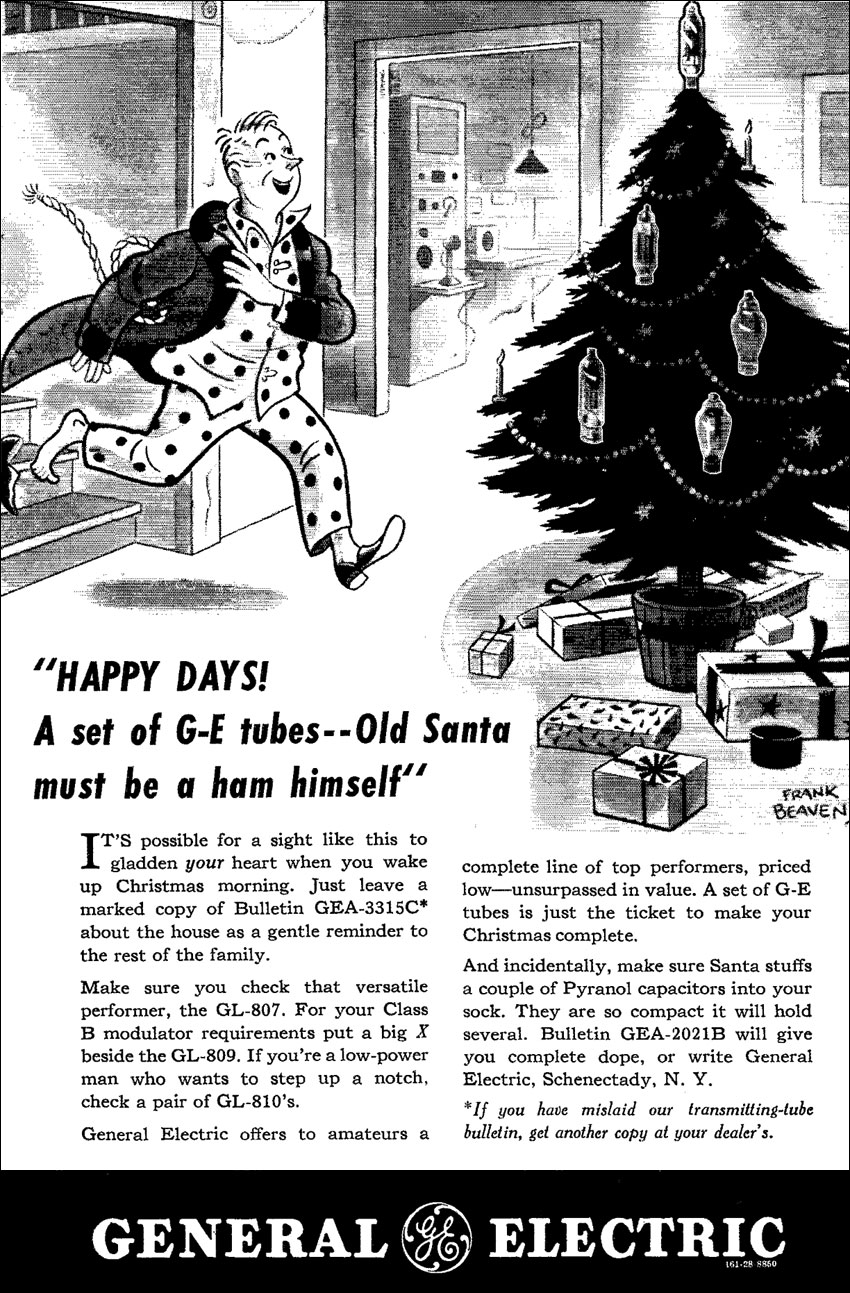
QST magazine, Dec 1941
Suggestions?
If you have suggestions on how to make the NZ Net better, or things you’d like to see covered in these updates, please contact ZL1NZ. You might even like to write something for the newsletter.
Thanks for reading, and I hope to hear you soon on the NZ Net!
—
Neil Sanderson ZL1NZ, Net Manager
New Zealand Net (NZ NET)
3535.0 kHz at 9pm NZT Mon-Fri

%20Dark%20Logo%20BIG%20TM.png)
